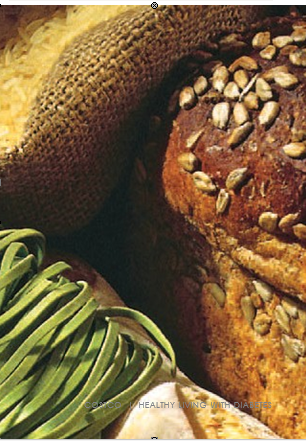Whole Grains for a Fuller Life
 Whole grains are natural carbohydrates that keep all the parts of the entire grain, even after processing. Some examples of whole grains are corn, barley, brown rice, buckwheat, whole oats and 100% whole-wheat breads and crackers. When you eat them, your body gets all the good nutrients they contain. That’s why whole grains are so good for everyone — with or without diabetes.
Whole grains are natural carbohydrates that keep all the parts of the entire grain, even after processing. Some examples of whole grains are corn, barley, brown rice, buckwheat, whole oats and 100% whole-wheat breads and crackers. When you eat them, your body gets all the good nutrients they contain. That’s why whole grains are so good for everyone — with or without diabetes.
WHAT ARE THE THREE PARTS OF WHOLE GRAINS?
Bran. This is the outer shell that protects the grain from insects, chemicals int he air and strong winds and rain. The bran layer has B vitamins, fiber, minerals and some disease-fighting products called phytochemicals.
Endosperm. This is the inside part of the grain, mostly made up of starch and sugar. It also have some B vitamins and protein.
Germ. This is the innermost part of the grain, which has the seed. It is made up of B vitamins, vitamin E, heart-heathly unsaturated fat, and phytochemicals.
The best way to know if a grain is a whole grain is to look at its food label. The first term on the list of ingredients should include the word “whole”. Some examples are whole oats, whole rye or whole wheat. Also, 100% whole grain on a food label means the food contains a whole grain, but it doesn’t mean that it contains only whole grains. Another good clue, a whole grain food product will have at least 3 grams of dietary fiber per serving.
HOW DO WHOLE GRAINS HELP PEOPLE WITH DIABETES?
- You get more vitamins, minerals and fiber from whole grains than from refined or processed grains.
- Whole grains help you feel fuller for a longer time between meals. You might eat less food as a result, which helps control your weight and your diabetes.
- Whole grains help stop blood glucose spikes so you can have better control of your blood glucose levels.
- Whole grains might help you lower your cholesterol level and improve heart health.
- The high-fiber content in whole grains helps your body have regular bowel movements.

